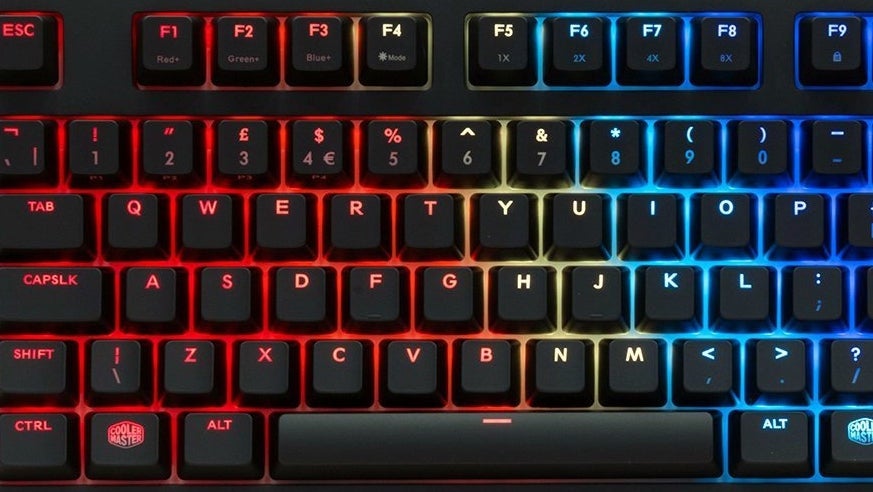When it comes to PC gaming peripherals, stats and specs drive purchases. Gaming monitors became popular because they offered lower latency or higher refresh rates, while gaming mice boasted higher sensitivities and improved tracking accuracy. Yet this quantitative trend doesn’t seem to apply to one peripheral in particular: mechanical keyboards. No single stat separates mechs from their non-mechanical counterparts, yet mechanical keyboards are routinely recommended over alternatives that cost a fraction of the price. Why is this the case? Are there genuine gaming advantages?
The answers lie in how mechanical keyboards went from niche accessories known only to retro enthusiasts to a key part of the multi-million dollar esports industry in only a few years. By taking a closer look at this short-lived transition period, we can get a better idea of what attracted gamers to these keyboards in the first place, what quantifiable advantages they offer and which models are worth considering today.
Before mechanical keyboards were hawked by the biggest gaming brands and promoted by esports celebrities, they were a tiny niche kept alive largely by the rediscovery of artefacts from another era. For decades, enthusiasts posted their latest finds from corporate auctions or thrift stores, swapped disassembly secrets on forums and performed crude experiments to learn more about how their favourite ‘mechs’ were made.
Mechanical keyboards use a mechanical switch made from a spring, plastic slider and stem beneath each key to register a key press and provide tactile or auditory feedback.A non-mechanical keyboard typically uses a single plastic sheet of squishy rubber domes to give feedback, and two separated membrane layers below which come together to recognise a key press.
As rubber dome keyboards offered the same basic functionality as expensive mechanicals at a tiny fraction of the cost, keyboards with mechanical switches were only used in retail or industrial environments where longevity mattered. However, a few small companies in the United States, Japan and South Korea used these mechanical switches to create high-end keyboards for programmers and other professional typists, who were willing to pay upwards of $100 for a keyboard that offered a better typing experience. These keyboards became popular with another class of professional as well: professional gamers, especially those based in the Mecca of esports: Seoul, South Korea.
It was here, around 2010, that games like StarCraft 2 and League of Legends first started to explode in popularity as broadcast sites like Twitch allowed gamers from around the world to tune in. Bigger gaming brands like Razer and Corsair started sponsoring pro-gaming teams, and they were quick to offer their own mechanical keyboards as well. Sales and visibility followed and within half a decade these keyboards have become standard equipment for many PC gamers.
However, it’s hard to know whether mechanical keyboards became popular because they were marketed well by savvy gaming brands, or whether mechanical keyboards actually provide a genuine gaming advantage over their non-mechanical counterparts. Let’s try to answer that question by looking at the first mechanical keyboards that were adopted by pro-gamers nearly a decade ago.
Cherry MX switches offer different combinations of tactile and auditory feedback, and require varying amounts of force to register a key press. Here are some common types.
Brown: light, tactileBlue: heavy, clicky, tactileBlack: heavy, linearRed: light, linear
These keyboards were available in a few different varieties, but the most popular used Cherry MX Brown and MX Blue mechanical switches. These switches both provide greater levels of tactile feedback than non-mechanical keyboards, thanks to a bump that occurs when the key is pressed down about halfway. That bump tells you exactly when the key press has been registered, and allows you to quickly move onto other keys. The MX Blue switch goes further, requiring a little more force to push, but providing an audible click as further feedback. Keyboards with these switches were popular with typists because they allowed for faster, more accurate typing and these same advantages translated well into strategy games like StarCraft which required incredibly fast and accurate key presses for players to compete at a high level.
Another advantage common to both typists and gamers was that of dependability. The rubber dome in non-mechanical keyboards hardens over time, requiring an increasing amount of force to register a key press. While rubber dome keyboards might be rated for fewer than 10 million key presses, mechanical keyboards are rated for more than 50 million. Even 10 million key presses sounds like a lot, both professional typists and professional gamers might reach that figure within a few years – in fact, some professional StarCraft gamers in Korea needed to replace their rubber dome keyboards every few months. That might make mechanical keyboards a more economical choice over the long term, especially if you value consistent performance.
